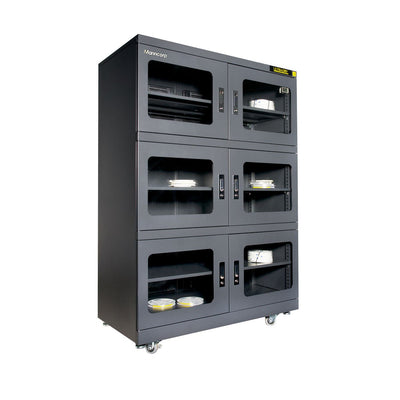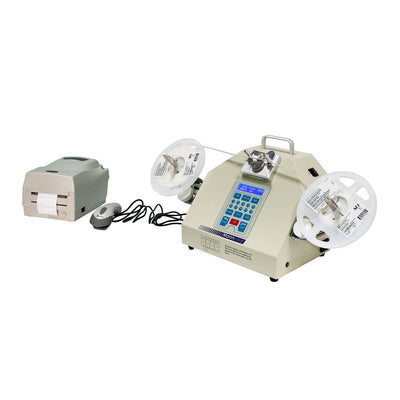Feeder Capacity
Feeder Capacity
And Why it Should Be at the Top of Your List When Selecting a Pick and Place Machine
When selecting Pick and Place machines for your company, several factors and specifications must be considered, but feeder capacity is arguably the most important. New customers often ask questions like, “How many heads does the machine have?” “What is the range of components it can handle?” and “How fast is it?” However, one key question that’s often overlooked is, “What is the machine’s maximum feeder capacity?” When working with a new customer, determining their required feeder capacity is the first step we take to ensure we recommend the right machine for their needs.
Feeder capacity refers to the total number of feeders that can be installed on a machine to set up a given assembly. A Pick and Place machine needs to “pick” the component from a feeder, and then “place” that component on the board during assembly. For every unique part on your board, you will need a separate feeder to assemble the board. Some customers, like LED lighting manufacturers, or companies that build very simple boards, only require handling a small number of unique components and a lower feeder capacity. Customers building larger, more complex boards often need over 100 feeders. Manncorp offers a selection of Pick and Place machines to meet both low and high feeder capacity needs.

KFTA3D feeders on a Pick and Place machine, with empty feeder slots on each side
There is a common misconception among customers new to the SMT industry that they can get away with having less feeders by changing out the feeders during the production run. We are asked about this concept often, especially by customers in low-volume assembly.
For example, let’s say a board has 50 unique parts, but the customer only has 25 feeders to work with. This customer isn’t concerned about machine speed, and due to their lower volumes, they have time to remove the feeders and change out the components on those feeders before building the second half of the assembly…
In theory, this sounds like it would work. Unfortunately, in practice, it does not. To assemble a board this way would require two programs. One program is for the first half of parts, and a second program is to place the remaining parts on the half-assembled board. A low-volume customer might only build 20-50 boards in a run. After the first half of the boards are done, the customer would have boards half-assembled with wet solder paste and parts placed. What does the customer do with the half-assembled boards while they wait to be completed? The biggest problem with this concept is that as the unfinished boards sit, the solder paste dries out and the flux with evaporate. The result is not only very poor soldering, but a board much more prone to failure. This is why it is important to have a Pick and Place machine with the correct feeder capacity for your needs.
Some customers build simple boards that do not require a large feeder capacity but may use many unique parts between the different products they build. A machine with a high feeder capacity is a huge benefit to customers building High-Mix, with a large variety of products. For instance, a customer that needs 50 feeders to build their most complex assembly but uses a total of 100 unique parts for all the products they build could set up the Pick and Place machine with 100 feeders (one for each unique part). When switching from producing one product to the next, they would only need to change the placement program, instead of removing the feeders and swapping out components. This setup allows customers to quickly build any of their products at a given time. Although their individual boards do not have many components, purchasing a Pick and Place machine with a higher feeder capacity is worthwhile for this customer. With a higher feeder capacity, this customer can increase overall production capacity and save time that would have been spent switching the placement programs and swapping components on a lower-feeder-capacity machine.

MC388 SMT Pick and Place machine for High Mix, High Component Count or LEDs.
Manncorp offers Pick and Place equipment with the highest feeder capacity per machine of any equipment supplier in the industry. Our smaller Pick and Place machines can handle 64-128 tape feeders, while our larger Pick and Place machines can handle 160-256 unique feeders for High-Mix assembly. We offer a variety of feeder types, including tape feeders, tube feeders, tray feeders, and strip feeders, and we can also handle loose parts. Send us your Bill of Materials here for a free evaluation to determine exactly what feeders are required to build your products.
All Manncorp machines handle the full range of SMD’s from 01005 to ultra fine pitch 12 mil (0.3mm) lead spacing integrated circuits. Our Pick and Place machines are available with as many as eight placement heads, like the MC388HS or the MC889 High Speed Pick & Place machines, with our recommendations based on your required speed. However, the most important criteria to consider when purchasing a Pick and Place machine is the feeder capacity and whether it will meet your production needs.
For Pick and Place inquiries, please reach out to Sales Manager Ed Stone at 215.808.6266 or email estone@manncorp.com.






 Back
Back